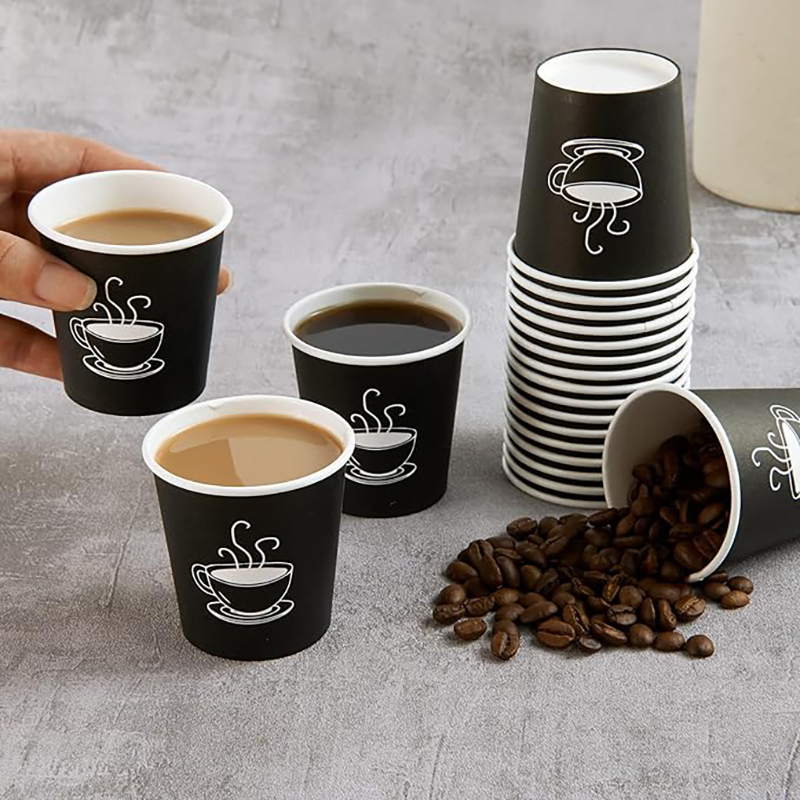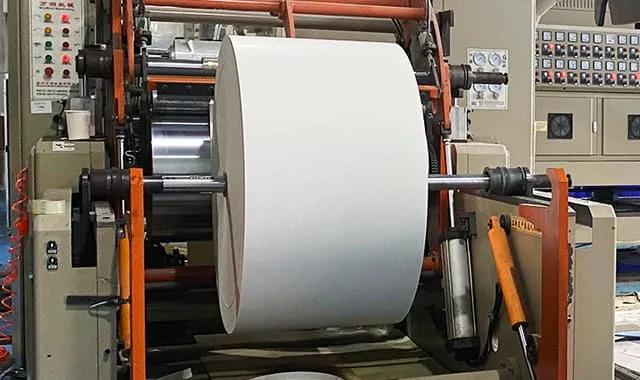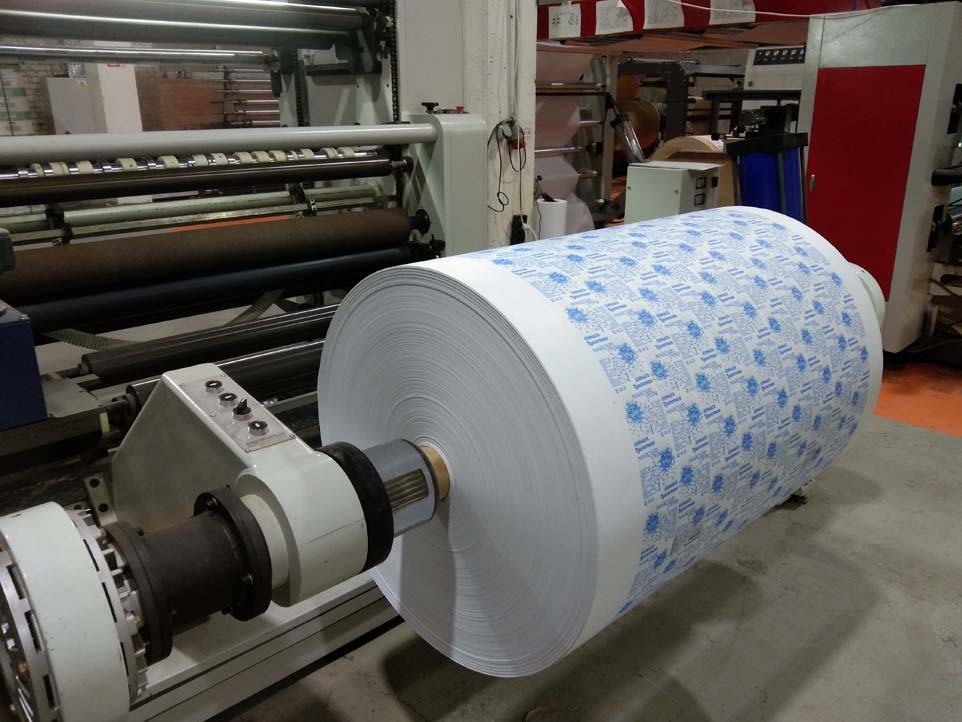Are Cupstock Manufacturing Innovations Reshaping the Industry?
Innovations in Cupstock Manufacturing: Exploring Cutting-Edge Technologies and Trends
Section 1: The Evolution of Cupstock Manufacturing
Cupstock paper has undergone significant transformations to meet the demands of the ever-growing food and beverage industry. In this section, we will explore the evolution of cupstock paper, the advantages of PE-coated cupstock paper, and the latest innovations in sustainable materials for cupstock manufacturing.
How has cupstock paper evolved to meet the demands of the food and beverage industry?
Cupstock paper is specifically tailored for paper cup manufacturing and plays a vital role in meeting the quality standards required by the food and beverage industry. Over the years, cupstock paper has undergone various advancements to enhance its performance.
Cupstock paper is now available in different variations with varying levels of coating, stiffness, and printability. Manufacturers are focusing on optimizing cupstock paper for specific requirements, such as hot and cold liquid resistance, printability, and durability.
In recent years, cupstock paper has seen improvements in its moisture resistance properties. This has been achieved through advancements in the coating technology used. These coated papers are capable of withstanding the liquid contents of the cup for extended periods, reducing the chances of leakage or compromising the cup's integrity.
What are the advantages of PE-coated cupstock paper in terms of moisture resistance?
PE-coated cupstock paper offers excellent moisture resistance, making it an ideal choice for both hot and cold drink cups. The polyethylene (PE) coating acts as a liquid barrier, preventing any moisture from seeping through the cupstock paper.
The advantages of PE-coated cupstock paper include:
- Improved insulation: The PE coating enhances the cup's insulation properties, keeping hot beverages hot and cold beverages cold for longer durations, ultimately enhancing the customer experience.
- Liquid barrier: The PE coating acts as an effective liquid barrier, preventing any leakage or seepage of the beverage into the cupstock paper. This significantly reduces the chances of the cup becoming soggy or losing its structural integrity.
- Enhanced printability: Single-sided PE-coated cupstock paper allows for better printability, ensuring that designs or logos on the cup are vibrant and eye-catching. This is especially beneficial for companies in brand-focused industries.
- Improved durability: Double-sided PE-coated cupstock paper provides enhanced moisture resistance and insulation properties compared to the single-sided variant. This makes it well-suited for durable cups used outdoors or for hot beverages that need to maintain their temperature for longer periods.
What are the latest innovations in sustainable materials for cupstock manufacturing?
As sustainability becomes a focal point for many industries, cupstock manufacturing is actively adopting innovative materials to reduce its environmental impact. Introducing sustainable materials into cupstock manufacturing helps minimize waste and promotes a greener future.
One of the recent innovations in sustainable cupstock materials is the use of biodegradable materials such as bamboo fiber or recycled pulp. These materials are derived from renewable sources and offer eco-friendly alternatives to traditional cupstock paper. Cups made from biodegradable cupstock paper can decompose naturally, reducing the environmental burden caused by disposable cups.
Another sustainable option gaining popularity is waxed cupstock paper. This type of cupstock paper is specially designed for extreme temperature applications. It features a protective wax layer, which not only enhances the cup's strength and durability but also lends it a shiny appearance.
Furthermore, manufacturers are exploring the use of recyclable and compostable materials, such as PLA (polylactic acid), a bio-based polymer derived from renewable resources like cornstarch or sugarcane. PLA-coated cupstock paper acts as an effective moisture barrier and can be easily composted or recycled, further reducing the environmental impact.
In conclusion, cupstock manufacturing has witnessed significant innovations to meet the demands of the food and beverage industry. The evolution of cupstock paper has resulted in improved moisture resistance properties, durability, and printability. With a focus on sustainability, the industry is now embracing the use of biodegradable materials and exploring alternatives that minimize environmental impact. These innovations in cupstock manufacturing ensure that the industry continues to adapt to changing needs while promoting a greener future.
Section 2: Advanced Techniques in Cupstock Production
In the world of cupstock manufacturing, advancements in technology and techniques have revolutionized the production process, leading to higher quality paper cups and increased sustainability. In this section, we will explore the key components used in manufacturing paper cups, the importance of paper cup machine operation, and the role of biodegradable coatings in enhancing sustainability.
What are the key components used in manufacturing paper cups?
Paper cups are composed of various components that work together to create a functional and durable product. The key components used in manufacturing paper cups include:
- Outer Paper Layer: The outer paper layer of a paper cup is responsible for providing a surface for printing graphics, designs, and brand logos. It is crucial for attracting customers and creating brand recognition.
- Middle Layer: The middle layer of a paper cup is typically made from wood chips or pulp. This layer provides stability and structural integrity to the cup, ensuring it remains rigid and can hold various liquids without leakage.
- Thin Plastic Coating: The thin plastic coating, usually made of polyethylene (PE), is applied to the inner surface of the paper cup. This coating acts as a liquid barrier, preventing the absorption of liquids and ensuring the cup remains sturdy even when holding hot or cold beverages.
How does the paper cup machine operation contribute to the quality of the final product?
The paper cup machine operation plays a crucial role in determining the quality of the final paper cup. The manufacturing process involves several steps, including cutting, forming, sealing, and curling. Each step contributes to the overall quality and functionality of the cup:
- Cutting: The cutting process involves shaping the paperboard into a specific cup size. Precision cutting ensures that the cup is the correct shape and size, allowing it to hold the desired volume of liquid.
- Forming: Forming is the process of transforming the cut paperboard into the shape of a cup. This step requires precise machinery and careful handling to create a seamless, leak-proof cup with smooth edges.
- Sealing: Sealing the bottom of the cup is essential to prevent any leakage. The machine applies heat or pressure to bond the edges together, creating a secure seal that keeps the contents of the cup intact.
- Curling: Curling the rim of the cup not only adds strength to the structure but also enhances the drinking experience by providing a smooth and comfortable edge for the consumer. Proper curling ensures that the cup feels pleasant to drink from and reduces any risk of injury from sharp edges.
The paper cup machine operation requires skilled operators who understand the intricacies of the process and can maintain consistency and quality throughout production. Continuous monitoring and regular maintenance of the machines are also essential to ensure the cups meet the desired standards.
What role do biodegradable coatings play in enhancing sustainability in cupstock manufacturing?
As the focus on sustainability grows, cupstock manufacturers are turning to biodegradable coatings as an alternative to traditional plastic coatings. These coatings offer several advantages in terms of environmental impact and sustainability:
- Reduced Environmental Footprint: Biodegradable coatings, such as those made from polylactic acid (PLA), are derived from renewable resources like cornstarch or sugarcane. Unlike traditional plastic coatings, which are derived from fossil fuels, biodegradable coatings have a significantly lower carbon footprint.
- Biodegradability: Biodegradable coatings break down naturally over time, minimizing their impact on the environment. These coatings can be composted or processed in anaerobic digestion systems, reducing waste and pollution.
- Enhanced Recycling Potential: Biodegradable coatings can be separated from the paper cup during the recycling process, allowing for more efficient recycling of the materials. This separation is not possible with traditional plastic coatings, which often contaminate the paper recycling stream.
- Consumer Preference: With increasing consumer awareness and demand for eco-friendly options, paper cups with biodegradable coatings are becoming more popular. Offering sustainable alternatives can attract environmentally conscious customers and enhance brand reputation.
Biodegradable coatings are being extensively researched and developed to ensure they meet stringent quality and safety standards. While the adoption of biodegradable coatings in cupstock manufacturing is still relatively new, it holds great promise in promoting sustainability and reducing the environmental impact of paper cup production.
In conclusion, advanced techniques in cupstock production have led to significant improvements in terms of cup quality and sustainability. The careful selection of key components, precise paper cup machine operation, and the use of biodegradable coatings are all essential aspects of modern cupstock manufacturing. By embracing these innovative techniques, manufacturers can create high-quality paper cups while minimizing their impact on the environment.
Future Trends and Market Insights in Cupstock Manufacturing
As the cupstock manufacturing industry continues to evolve, it is crucial to stay up-to-date with the latest trends and market insights. This section will explore the current market trends shaping the cupstock manufacturing industry, how the industry is addressing environmental concerns and promoting sustainability, and the role of customized paper cups in brand exposure and customer engagement.
Current Market Trends in Cupstock Manufacturing
The cupstock manufacturing industry is witnessing several trends that are shaping its future. One such trend is a growing demand for high-quality paper cups with innovative designs and functionalities. Consumers are increasingly seeking cups that not only serve the purpose of holding their favorite beverages but also contribute to a unique and enjoyable experience.
Another significant trend is the focus on environmental impact and sustainability. With increasing awareness about the environmental consequences of single-use plastic products, there is a rising demand for eco-friendly alternatives. This has led to the development and adoption of biodegradable cupstock paper made from sustainable materials like bamboo fiber or recycled pulp.
Furthermore, technological advancements have played a crucial role in shaping the cupstock manufacturing industry. Automation and artificial intelligence are being increasingly utilized to enhance efficiency, precision, and productivity in the manufacturing process. Quality control systems incorporating machine vision and AI are ensuring consistent product quality and reducing errors.
Addressing Environmental Concerns and Promoting Sustainability
Environmental concerns related to the use of paper cups have prompted the cupstock manufacturing industry to take proactive steps towards sustainability. One approach is the incorporation of biodegradable coatings in the manufacturing process. Coatings like polylactic acid (PLA) derived from renewable sources provide a sustainable alternative to conventional coatings and contribute to reducing environmental impact.
Additionally, recycling initiatives have gained importance in the cupstock manufacturing industry. Efforts are being made to promote the recycling of used paper cups and to explore innovative ways to handle and recycle the cups effectively. This not only reduces the environmental footprint but also creates a circular economy where waste is minimized, and resources are utilized efficiently.
Transportation emissions associated with the delivery of paper cups are another focus area for sustainability. Optimal routing and transportation management strategies are being implemented to reduce carbon emissions. This includes optimizing transport routes, utilizing eco-friendly modes of transportation, and exploring packaging solutions that minimize space and materials.
Customized Paper Cups: Enhancing Brand Exposure and Customer Engagement
Customized paper cups have become a powerful marketing tool for businesses across various industries. Brands are capitalizing on the opportunity to showcase their logo, design, or message on the cups to increase brand exposure and create a memorable experience for customers.
Customized paper cups serve as mobile billboards, reaching a wider audience as they are carried around by customers. Whether it's a coffee shop, a restaurant, or at events and conferences, these cups create a visual impact, attracting attention and generating brand recognition. This exposure is especially valuable in today's digitally connected world, where customers actively share their experiences on social media platforms.
Moreover, customized paper cups can contribute to customer engagement. By incorporating interactive elements like QR codes or promotional offers, businesses can encourage customers to interact with their brand beyond the purchase. This fosters a sense of loyalty and enhances the overall customer experience.
In conclusion, the cupstock manufacturing industry is continuously evolving to meet the growing demand for high-quality and sustainable paper cups. Market trends reflect a focus on innovation, sustainability, and customization. By staying informed about these trends and leveraging them to their advantage, businesses can stay ahead in this competitive industry and contribute to a more sustainable future.
Sources:
- Paperjoy
- Yoonpak
- Deskera
Table 1: Advantages of PE-coated cupstock paper
| Advantages | Description |
|---|---|
| Improved insulation | The PE coating enhances the cup's insulation properties, keeping hot beverages hot and cold beverages cold for longer durations, ultimately enhancing the customer experience. |
| Liquid barrier | The PE coating acts as an effective liquid barrier, preventing any leakage or seepage of the beverage into the cupstock paper. This significantly reduces the chances of the cup becoming soggy or losing its structural integrity. |
| Enhanced printability | Single-sided PE-coated cupstock paper allows for better printability, ensuring that designs or logos on the cup are vibrant and eye-catching. This is especially beneficial for companies in brand-focused industries. |
| Improved durability | Double-sided PE-coated cupstock paper provides enhanced moisture resistance and insulation properties compared to the single-sided variant. This makes it well-suited for durable cups used outdoors or for hot beverages that need to maintain their temperature for longer periods. |
Table 2: Key Components Used in Manufacturing Paper Cups
| Component | Description |
|---|---|
| Outer Paper Layer | Provides a surface for printing graphics, designs, and brand logos. |
| Middle Layer | Made from wood chips or pulp and provides stability and structural integrity. |
| Thin Plastic Coating | Applied to the inner surface of the paper cup, acts as a liquid barrier and ensures cup remains sturdy when holding beverages. |
Table 3: Environmental Considerations in Cupstock Manufacturing
| Environmental Consideration | Description |
|---|---|
| Biodegradable Coatings | Coatings made from renewable resources like polylactic acid (PLA) offer a sustainable alternative to traditional plastic coatings, with a reduced carbon footprint and the ability to break down naturally over time. They can be composted or processed in anaerobic digestion systems, minimizing waste and pollution. |
| Recycling Initiatives | Efforts are being made to promote the recycling of used paper cups and explore innovative ways to handle and recycle the cups effectively. This reduces the environmental footprint and contributes to a circular economy where waste is minimized, and resources are utilized efficiently. |
| Sustainable Transportation | Optimal routing and transportation management strategies are being implemented to reduce carbon emissions associated with the delivery of paper cups. This includes optimizing transport routes, utilizing eco-friendly modes of transportation, and exploring packaging solutions that minimize space and materials. |
FAQs about Cupstock Manufacturing Innovations
How has cupstock paper evolved to meet the demands of the food and beverage industry?
To meet the demands of the food and beverage industry, cupstock paper has undergone advancements in its coating technology, printability, and moisture resistance properties.
What are the advantages of PE-coated cupstock paper in terms of moisture resistance?
PE-coated cupstock paper offers improved insulation, acts as a liquid barrier, enhances printability, and provides improved durability for hot and cold drink cups.
What are the latest innovations in sustainable materials for cupstock manufacturing?
Innovations in sustainable cupstock materials include the use of biodegradable materials like bamboo fiber, waxed cupstock paper for extreme temperatures, and recyclable materials like PLA derived from renewable resources.
What are the key components used in manufacturing paper cups?
Key components in manufacturing paper cups include the outer paper layer for printing, the middle layer for stability, and a thin plastic coating like polyethylene for liquid barrier protection.
How does the paper cup machine operation contribute to the quality of the final product?
The paper cup machine operation, involving cutting, forming, sealing, and curling, plays a critical role in determining the quality of paper cups by ensuring precision and consistency throughout the production process.
Innovations in cupstock manufacturing bring sustainable materials and advanced techniques to enhance quality. The evolution of cupstock paper meets industry demands with PE coating for moisture resistance. Paper cup machines play a vital role in production quality. Biodegradable coatings support sustainability efforts. Market trends drive environmental focus and customization for brand exposure. Embracing these trends will lead to a more efficient and eco-friendly cupstock industry.







